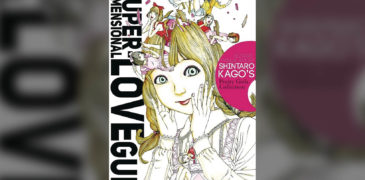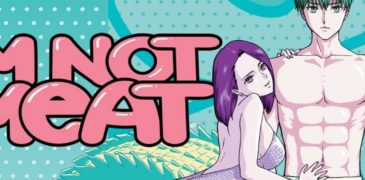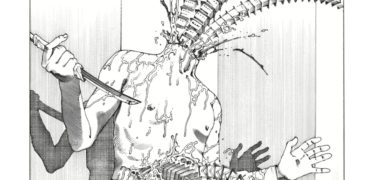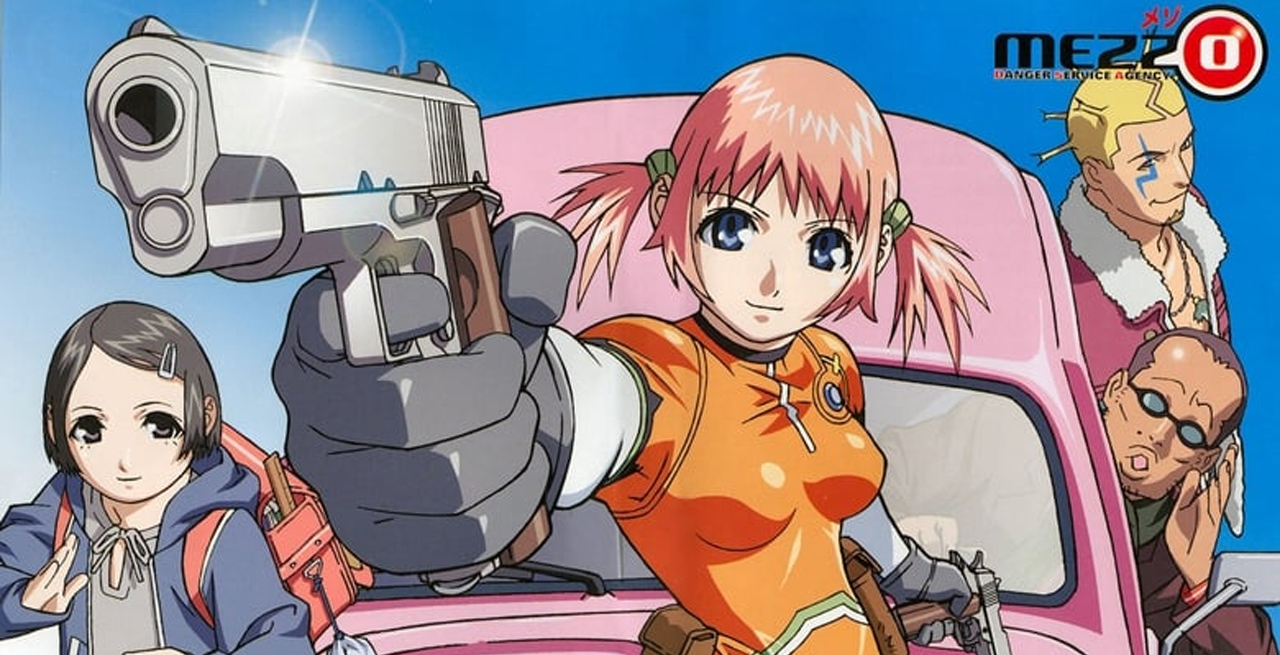
With his OVA A Kite released in 1998, Yasuomi Umetsu would leave an indelible mark on the world of adult anime. Able to take a rare auteur approach by simultaneously designing, writing, and directing the OVA; Umetsu would create a short film dripping with his own personal style, heavily inspired by Western action movies. This was soon followed up in 2000 with Mezzo Forte, which whilst carrying the same flair, cuts a very different silhouette.
Obviously Mezzo Forte is nowhere near as dark as A Kite, but as a 40-minute OVA, it features an incredible amount of worldbuilding in comparison. From the varied character designs, the references to Kurokawa’s history, to smaller more subtle things such as Kurokawa driving a beloved VW Beetle and the DSA (Danger Service Agency) office being a double-decker London bus perched on top of a building’s roof: everything about Mezzo Forte’s world and characters screams to be explored further. It does seem with its creation, Yasuomi Umetsu had more than just the single OVA in mind. The dynamics of the DSA where they take on any dangerous mission seems to be built for episodic japes and brings to mind the WWWA from Dirty Pair with its “trouble consultants” Kei and Yuri. Further clues to his inspirations come via an extremely obscure reference to an early Lupin III episode where the team utilise a remote-controlled ladybird robot. It is plain to see with the conclusion of Mezzo Forte that Umetsu had done all the groundwork to make an episodic series like Dirty Pair, Lupin III, or Cowboy Bebop, and the OVA itself makes the perfect pilot to show what this world has to offer.

Despite the less-than-mainstream nature of Mezzo Forte, it eventually got picked up for a 13-episode TV series broadcast in 2004 called Mezzo DSA, making it the first time and only time a sequel to an adult anime had been broadcast on a terrestrial TV station; however, big changes were made to its DNA to fit. Obviously, the more adult aspects couldn’t be included, but the signature and standout violence was also removed almost entirely as it was deemed this series should be aimed towards kids and not older teens. Much like the similar case with Bee Train’s assassin series Noir, Mezzo DSA was massively sanitized to meet this new audience. To further appeal to this new demographic, Mikura received a moé makeover with much larger eyes, now coloured blue, and her hair changed to a brighter pink. Also added to the lineup was Asami: a shy 12-year-old girl seemingly meant as an audience proxy. However, as previously mentioned, there’s much more to Mezzo Forte than just sex and violence – so even with a more kid-friendly tone, does its fun nature still shine through?
The Danger Service Agency is a small team which specialises in “danger business”. Got a job so risky and weird that no one else will help? Well, these are your guys. The team is led by the middle-aged Kurokawa – a wily ex-cop and terrible cook. His right-hand woman is the feisty Mikura – a hot-headed martial arts expert and a dead eye with a gun; and backing them up is Harada – a tech-whiz who provides their gadgets and any necessary backup on cases. Alongside the gang, and occasionally making a nuisance of herself, is Asami. When the girl’s life is inadvertently saved by Mikura, she latches on to her new hero and role model; as the series progresses, the shy and vulnerable girl gradually develops the ability to defend herself from her bullies and even becomes Mikura’s little apprentice. The series sees the team taking on an extremely wide variety of cases, tackling anything from ghosts, weather-changing aliens, deadly viruses, and even a mummy’s curse. In between these cases, the team is stalked by a mysterious sniper who may or may not belong to their arch nemeses – the Black Scissors (a group of barber assassins) who occupy the premises beneath their bus. With Kurokawa’s past as a cop catching up with him, the small team will eventually enter a fight for their survival.
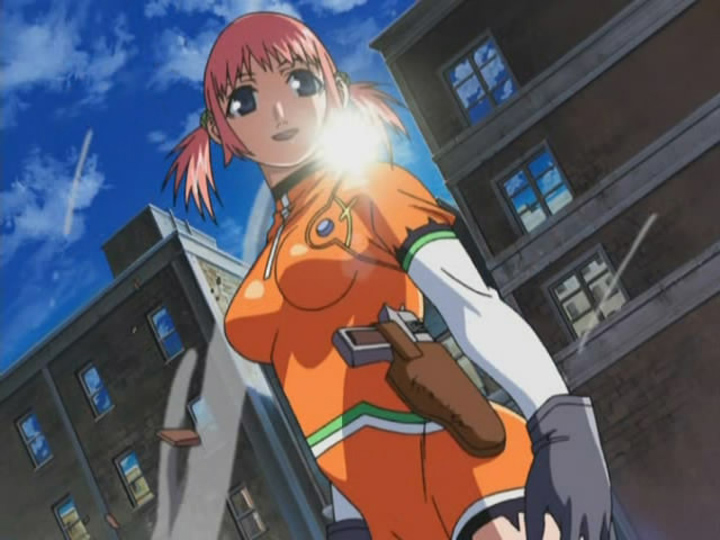
Right off the bat, it seems that writer and showrunner Takao Yoshioka was a little too liberal with the “anything could happen” formula of the DSA. Whilst Mezzo Forte makes it clear that they are first and foremost guns for hire, Mezzo DSA turns it more into The X-Files with the wacky situations severely pushing the limits of believability. Nevertheless, there are some truly excellent standout episodes. Unusually for a series aimed at kids, we get a direct resolution to Mezzo Forte’s story arc, all told across two unique episodes (Shell of Lies, Posi & Shell of Lies, Nega) which show the same series events told from different perspectives. Another particularly interesting episode (Shell of Dreams), which is very ahead of its time, focuses on a video message sent through phones which can hypnotise and control the recipient, driving them to murder. It’s worth noting that this was made in 2004 when flip phones were the height of mobile technology.
The main boon for the series is the budget which is perhaps understandably low for such a risky property. Despite being produced by ARMS (the same studio as A Kite and Mezzo Forte) Mezzo DSA was created entirely using digital animation which was still in its infancy in anime and demanded a decent budget to look good. Yasuomi Umtesu’s involvement in the series was also fairly minimal with the first episode being the only one which he directed, meaning the rest of the series lacks his eye for bombastic action scenes. Every effort is taken to cut costs with one particularly egregious example being episode 3 (Shell of Fear) where a large portion of it features looped animation during a road trip, all accompanied by Mikura sitting in the car repeatedly singing the series’ theme song through a karaoke mic. Given how good the English dub was for Mezzo Forte, it’s worth noting that Mezzo DSA was dubbed in Houston, not L.A. like its predecessor, meaning the original cast does not return. Whilst the dub is generally competent enough, it is clearly rushed and is very representative of this era in anime where ADV was focused on pumping out as many dubs and DVDs as quickly as possible.
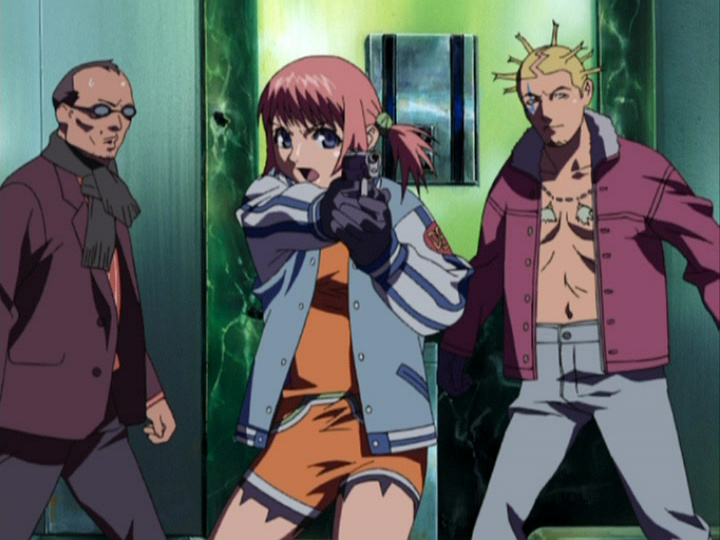
At the end of the day, turning such a distinctive adult anime into a series for a younger audience was always going to be difficult to pull off, and Yasuomi Umetsu himself admitted: ‘We understood that regulations were strict, but at times we were forced to produce our work in a way that held our heads down, and we struggled to find a balance between the extreme sexual depictions and gun action of our previous films.’
Whilst Mezzo Forte fans may find Mezzo DSA a disappointing step down from the highs of the OVA, the series still remains faithful to the same tone and characterisation of the original, even if feeling unremarkable in comparison. Even then, each episode is still fairly amusing and watchable, though fairly unmemorable in the grand scheme of things. Even with its toned-down nature, there’s still plenty of action to be had throughout the series, but certainly don’t expect the bloody extremes of its predecessor. It is a series that is best held together by its characters which just goes to show how strong Umetsu’s original production was. Being born out of adult animation, the original characters are free from the usual tropes of anime aimed at younger audiences, meaning that Kurokawa, Mikura, and Harada retain their uniqueness in a sea of generic anime heroes. Whilst a potential second series was teased at the end of the final episode, Umetsu has mentioned that, with the death of actor Taichiro Hirokawa who provided the voice of Kurokawa, he would not revisit Mezzo out of respect.
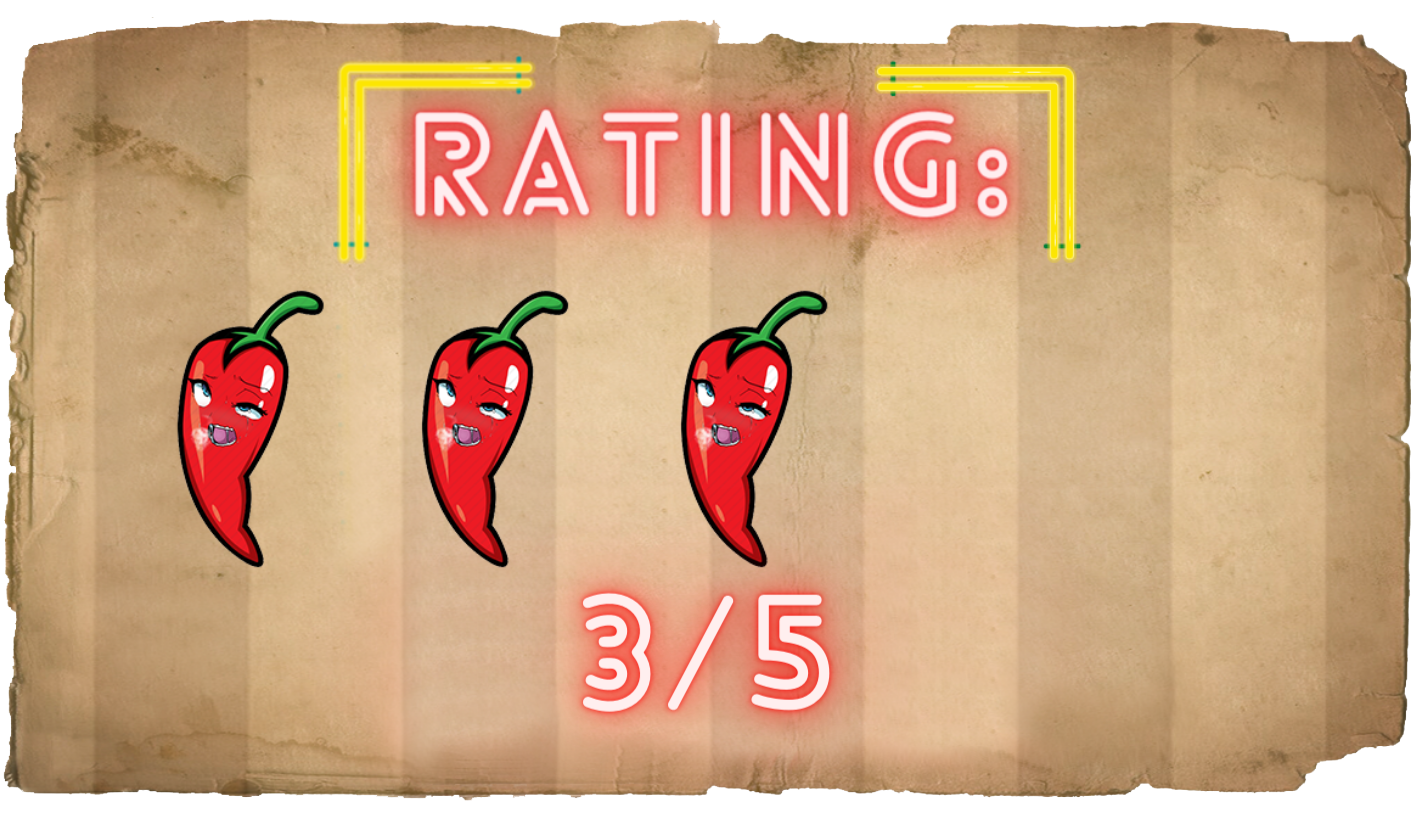
*Affiliate Link
Mezzo DSA is available to purchase here.*
More NSFW Reviews
Earlier this year Seven Seas Entertainment announced the launch of a new imprint, called Steamship, “dedicated to sexy romance for women, with manga in the genres of shojo, josei, Teens’… Super-Dimensional Love Gun is a 2017 ero-guro horror manga, written and illustrated by world-renowned mangaka Shintaro Kago. The manga collection of 15 short tales based around the mangaka’s distinct style… Handsome Usahara Kunio has no shortage of women falling for him, as a competent career man with a well-tuned physique, all his coworkers are left wondering; why is this catch… Taking place after the bloody conflict in The Princess of the Never-Ending Castle, “Twelve Sisters” (shortened for sake of sanity) takes another trip to the mind-bending world of branching realities…Outbride: Beauty and the Beasts (2022) Manga Review: Your Otome Fantasies Just Got A Lot Steamier!
Super-Dimensional Love Gun (2017) Manga Review – The Master of Modern-Day Ero-Guro
I’m Not Meat (NSFW) Manga Review – Fighting Those Animalistic Desires
The Twelve Sisters of the Never-Ending Castle (2021) Manga Review – Guts in Knots

Hi, I have a borderline obsession with Japanese showa-era culture with much of my free time spent either consuming or researching said culture. Apparently I’m now writing about it as well to share all the useless knowledge I have acquired after countless hours surfing the web and peeling through books and magazines.

